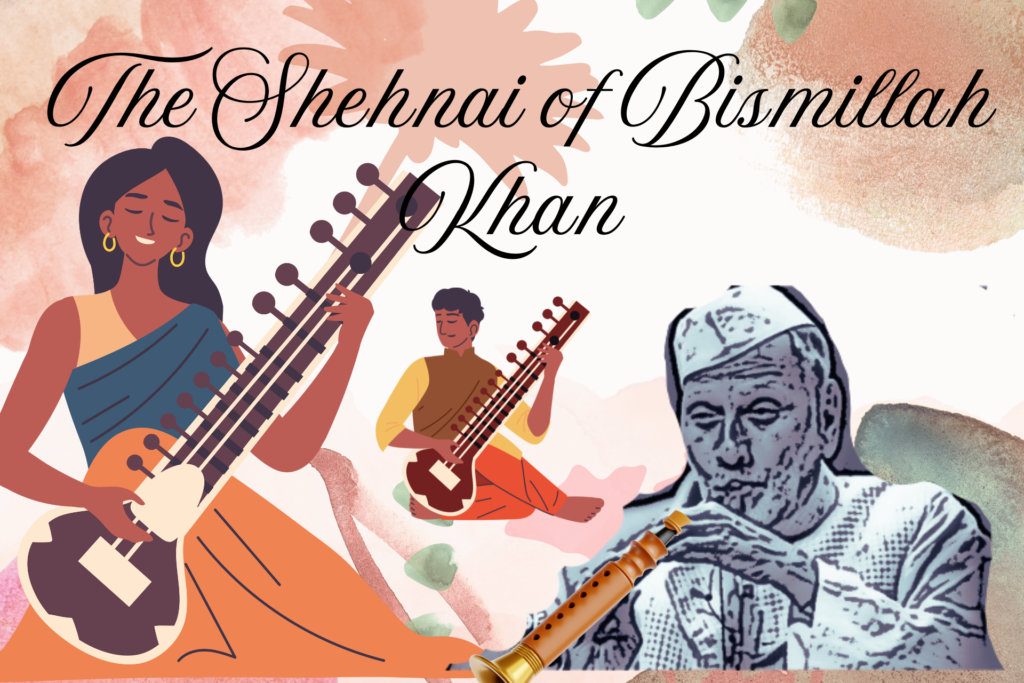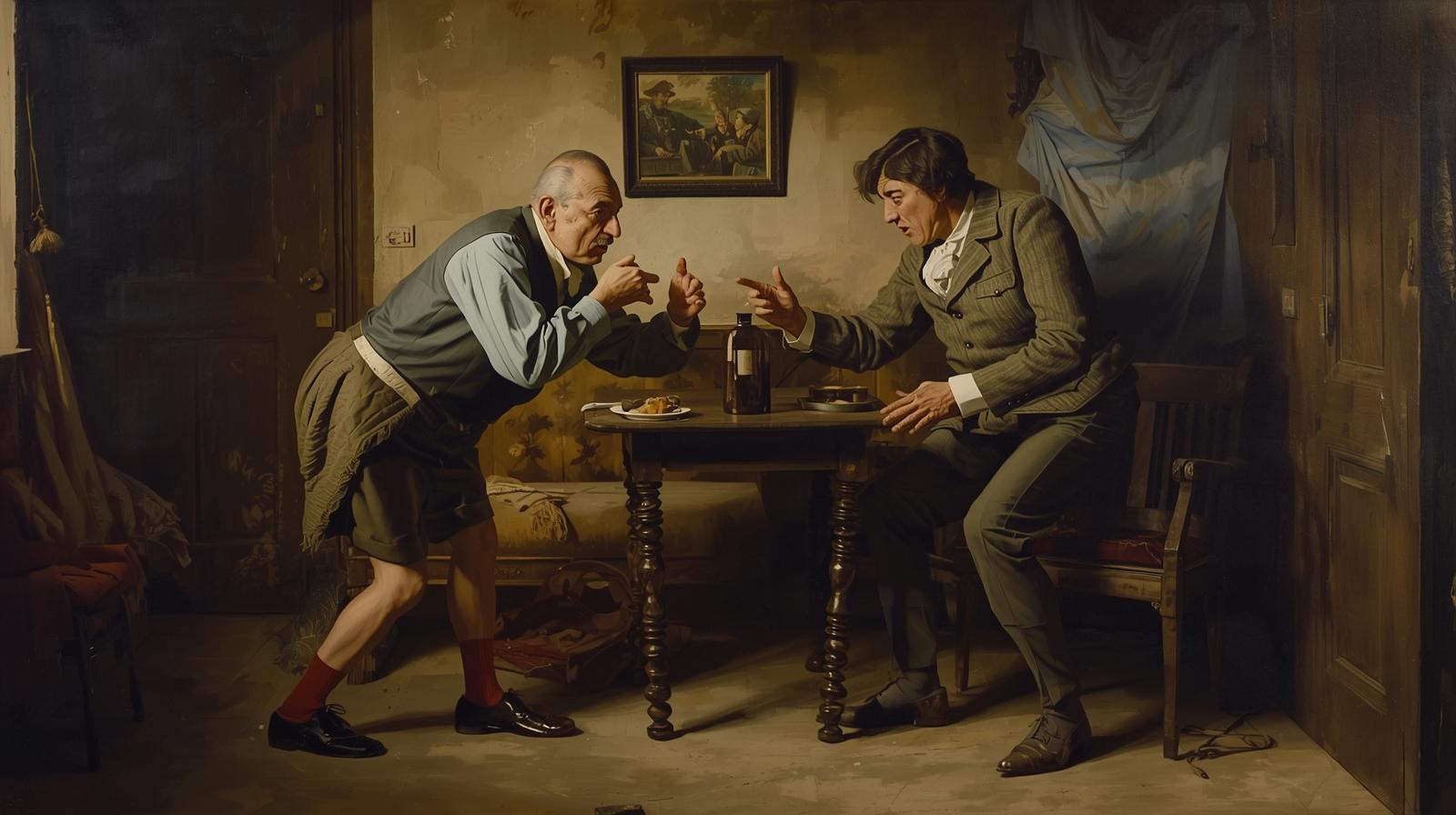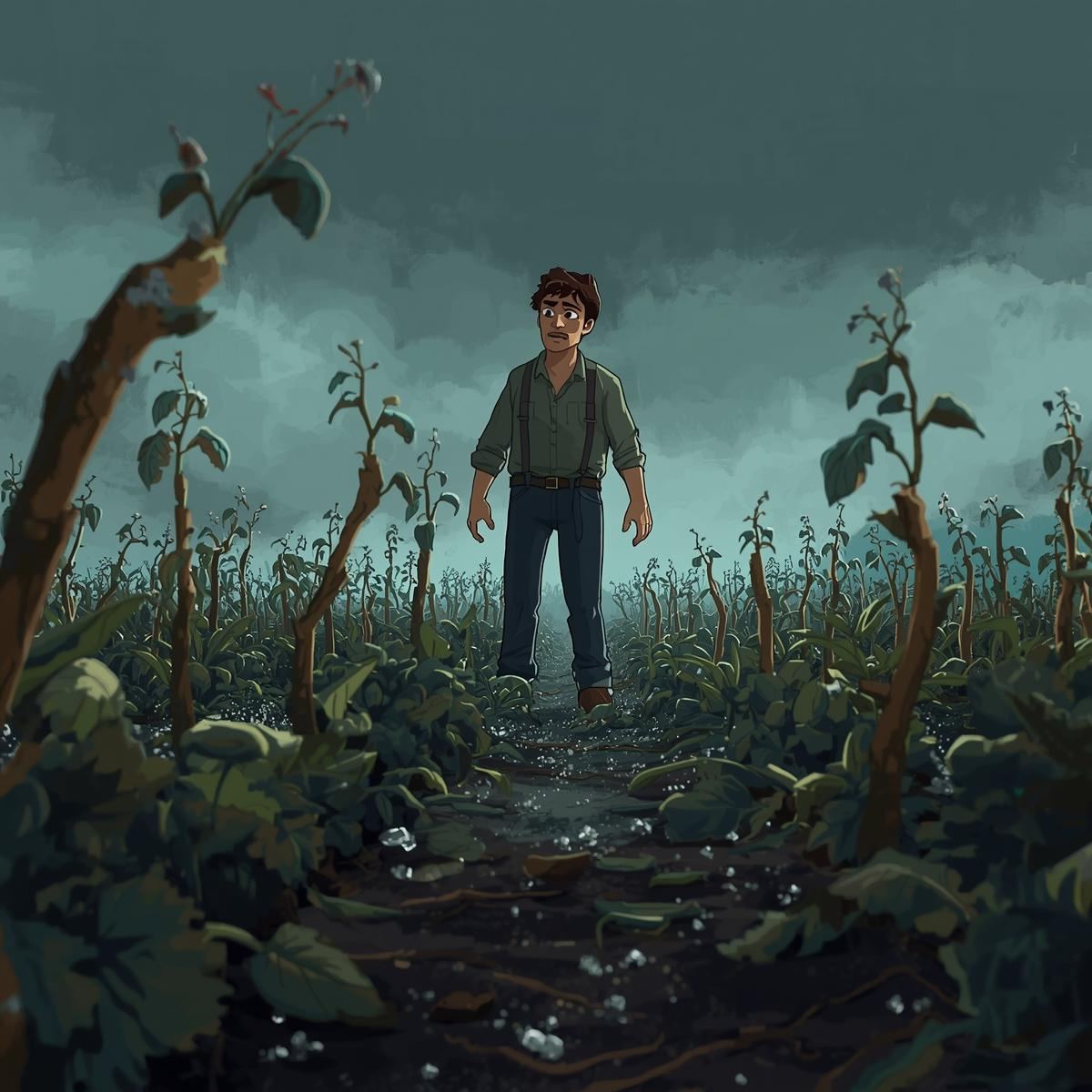Summary and Analysis
“The Shehnai of Bismillah Khan” explores the life and contribution of the eminent Indian musician Bismillah Khan, who elevated the status of a folk, reeded wooden instrument and brought it to the forefront.

Origin of the Shehnai (The Shehnai of Bismillah Khan)
The shehnai is an improved version of a folk-reeded instrument called the pungi, which Emperor Aurangzeb banned from the Mughal residence due to its shrill, unpleasant tonal quality. A barber (nai) residing in the court of Aurangzeb revived it. The barber belonged to a family of professional musicians. He improved upon the instrument, crafting a broader and longer stem with seven holes, finally transforming the shrill, unpleasant noise into a soft, melodious sound, which he presented and performed in Shah’s chamber for the first time, giving rise to its current name, Shehnai.
Traditionally, the shehnai was a segment of the assemblage of nine musical instruments called Naubat found in the royal court. It was believed to be a propitious instrument for its beautiful sound and was only performed in temples and royal courts during ceremonial functions and important events.
Contribution of Bismillah Khan (The Shehnai of Bismillah Khan)
Contribution of Bismillah Khan (The Shehnai of Ustad Bismillah Khan)
This Indigenous double-reed wind instrument gained global recognition due to the virtuoso shehnai player Ustad Bismillah Khan. Born on 21 March 1916 in Dumraon, Bihar, Bismillah Khan hails from a lineage of illustrious shehnai players. His grandfather was well-known as the Shehnai Nawaj of the Bhojpur King’s court. His paternal forefathers, including Paigambar Bux, Bismillah’s father, were shehnai players.
Ali Bux, Bismillah’s maternal uncle, was a well-known shehnai player in Banaras (Varanasi). Young Bismillah was fascinated by his uncle’s shehnai playing. He gradually started to acquire the skills from his uncle. He would practise diligently. The Balaji Temple, Mangal Maiya, and the banks of Ganga were some of his favourite spots for practising shehnai while growing up. The flowing river affected him to interpret and improvise ragas, previously thought impossible on the shehnai, exalting its status from a traditional instrument to a classical one.
Young Bismillah’s rise to fame started when he accompanied his uncle in a recital at the All India Music Conference in Allahabad. He got the golden break of his career with All India Radio. He made history by becoming the first Indian to perform his music in Red Fort on Independence Day in 1947, gaining national acclaim. The King of Afghanistan, Zahir Shah, was deeply impressed by Ustad’s performance and gifted him generously. He also composed music for two Indian films—Dil ka khilona hai toot gaya, Vijay Bhatt’s Gunj Uthi Shehnai, and Vikram Srinivas’s Kannada venture Sanadhi Apanna.
Global Acknowledgements
Internationally, he performed at prestigious venues such as the Lincoln Center in the United States of America. He was the first Indian invited to perform there. He also participated in the World Exposition in Montreal, the Cannes Art Festival, and the Osaka Trade Fair. Tahar Mosiquee Ustaad Bismillah Khan, an auditorium in Tehran, was named after him. Despite his global recognition, he never desired to leave his country, especially Banaras and Dumraon, exemplifying his deep love and respect for our culture and heritage.
Awards
Ustad Bismillah Khan received numerous awards during his lifetime, including the Padma Bhushan, the Padma Vibhushan, and India’s highest civilian award, the Bharat Ratna.
Bismillah Khan was regarded as a symbol of religious harmony. Though a devout Muslim, he played in Hindu temples without discomfort. He lived in Varanasi until his death on 21 August 2006. He was given a state funeral, and the Government of India declared one day of national mourning in his honour.
Question and Answer (The Shehnai of Bismillah Khan)
Answer these questions in 30-40 words.
1. Why did Aurangzeb ban the playing of the pungi?
The pungi is a well-recognised folk reed instrument common in the Indian subcontinent. Mughal Emperor Aurangzeb banned the playing of the pungi in his royal residence because of its shrill, unpleasant noise.
2. How is a shehnai different from a pungi?
The pungi is a folk instrument notable for its shrill, unpleasant noise. A barber who lived in Aurangzeb’s court improved its structure by crafting a broader stem and seven holes, which produced a beautiful, melodious sound and became popular as the ‘shehnai’.
3. Where was the shehnai played traditionally? How did Bismillah Khan change this?
The shehnai originally was a part of Naubat, an assemblage of nine musical instruments found in royal courts. The soft, melodious sound of the shehnai was considered auspicious. This faith led to playing the shehnai only in temples and during ceremonial events. Bismillah Khan performed various ragas that were thought to be beyond the range of the shehnai. He brought the traditional instrument to the concert stage.
4. When and how did Bismillah Khan get his big break?
The opening of All India Radio in Lucknow in 1939 brought him the greatest opportunity of his career. His shehnai reached a wider audience. He gained immense popularity and received the opportunity to play in Red Fort on the first Independence Day celebration of India.
5. Where did Bismillah Khan play the shehnai on 15 August 1947?
Why was the event historic?
Bismillah Khan played the shehnai in the Red Fort on the occasion of India’s first Independence Day celebration. India gained independence on 15 August 1947; Bismillah Khan became the first Indian to greet the nation with his shehnai. His exceptional interpretation of Raag Kafi from the Red Fort spellbound an audience that included Pandit Jawaharlal Nehru, who later gave his famous ‘Tryst with Destiny’ speech.
6. Why did Bismillah Khan refuse to start a shehnai school in the U.S.A.?
Ustad Bismillah Khan was deeply attached to his birthplace and hometown, Dumraon and Banaras. To him these two places are the best places in the world. It was unimaginable for him to leave his country, his city Banaras, and holy Ganga and stay in a foreign country. When his student offered to recreate the temples of Banaras there, Ustad playfully asked if he could also transfer the river Ganga there.
7. Find at least two instances in the text which tell you that Bismillah Khan loves India and Benaras.
Bismillah Khan rejected the offer to head a shehnai school in the USA because he did not wish to leave his hometown, Banaras, and the holy river Ganga. He also said that whenever he was in a foreign country, he kept yearning to see Hindustan. While in Mumbai, he thought only of Benaras and the holy Ganga. And while in Benaras, he missed the unique mattha of Dumraon.”





